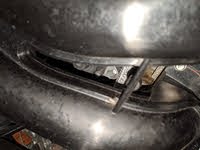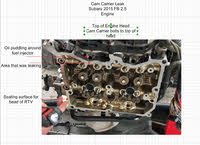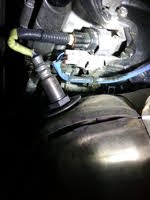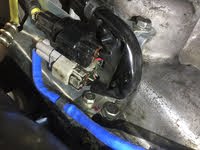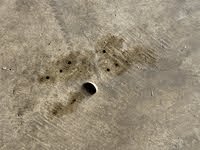Engine Oil Leaks with Subaru Engines in General
I'm planning on purchasing a new Subaru Forester, but I've heard that Subarus in general have problems
with the engines leaking oil after 40K to 50K miles. Is this true? Has the problem been resolved
46 Answers
It's pretty typical of all Subaru's with the boxter engine. Nothing I know of has been done to fix the issue. The only way I know of to fix the issue is to run factory recommended oil (I prefer Castrol) and add Lucas Oil Stabilizer.
leaks are normally from rocker cover gaskets at the side
i have an 01 outback with 175k miles and it never had a leak problem some engines need a head gasket rebuild which mine did which could have been the reason for no leaks
I have an '08 OutBack with 98K miles. Not a leak to be found. Engine and undercarriage is clean and dry.
50,000 miles would be premature for a Subaru. My 2003 has 197,000 miles on the original gaskets but does leak some oil. Use Subaru anti- leak in the radiator, replace coolant regularly with the proper type, use a good grade gas so you don't have pinging and maintain the battery connections. These things will help extend your head gasket life but due to the open block design of Subaru engines the head gaskets will have to be replaced sooner or later.
TheSubaruGuruBoston answered 9 years ago
Subies can run a "wet diaper" more as a function of TIME (and luck) rather than mileage rolled around. Minor leakage at the valve cover spark seals...and maybe even a rare rear main seal...can be reduced by using a petroleum "stop leak" oil conditioner. 2.5i right side head gasket oil leakage, however, has no cheap fix. As I mentioned elsewhere, using 10w oils instead of 5w (or especially 0w synth!) will seriously abate oiil consumption rates. Remember that boxer motors sit in fluids at rest, and are butterflied "open", so isothermality is difficult to achieve, resulting in the increased chances for running wet with age. Thicker oils work well.
My 2015 Outback not only had 2 oil leaks at 57,000 miles, but the transmission also blew. After doing some online research, I've become aware that apparently 2010-2015 were not great years for Subaru.
My 2001 forester - manual needed head gasket, cover gasket and spark plug seals at 165,000 , it just hit 310,000 and oil is pissing out exactly where it did last time . Ah well another $ 1000. Other than that what a good motor exept for the coil module ive done 5 of them
I've got a 2012 Forester and have to agree with Couchette. Up until 4 months ago I had no visible leaking and now it's the size of a softball. I just called them and they said 2 bolts are off of the Cam, but that wouldn't stop the leaking the Cam needs to be resealed. (they replaced the RH cam, while under warranty in 2014, the engine in 2017). Of course their quoted cost is $2300! Ouch. the thing is, I saw no leak until I took it in for a noise, and they saw something. I don't think I'm recommending them any more
My 2013 Forester developed the typical slow leak, requiring topping off between oil changes, at about 70K miles. It was not a head gasket issue, I'm told it was the rings. I just traded up to a 2019 Forester. I considered leaving Subaru to avoid the oil issue, but you just can't match the AWD with anything else in it's class. And I'm told that as long as you diligently top off when needed, it doesn't get worse. But I was using 0w, I wonder if I should use 5 or 10w instead. 0w is what mfr recommends.
TheSubaruGuruBoston answered 6 years ago
Dean...ONLY in North America! Look at Subie's international spec and you'll see the far better 5W30 spec. The reason for the 0w spec in North America is simply because SOA worries that owners will complain about timing chain rattle on cold starts. Try 5w30 to mitigate consumption during winter. I'd use 10w40 in summer...for even the superb 15w50 synth in hot climates' summers.
Anyone considering the purchase of a used Subaru with the Boxer engine needs to be very careful. In addition to the infamous head gasket oil leak, there are a number of other areas on the engine where leaks can appear. Some will disagree, but if you factor out the low center of gravity, great handling in ice/snow, etc. and just look at long term maintenance, the Subaru is not going to come out very high on the list. There is little value in having an engine that will last for 250K miles, if you have to spend $2K - $3K for simple repairs. The design of the Boxer engine is an accident waiting to happen - there are too many oil sealing surfaces. Just about any oil leak (Google Subaru oil leaks) is going to require that the engine be pulled. That is at least a $3000 repair bill. Think of the last time that you had a car that required the engine to be pulled in order to fix a $2 part that was bad. If you are willing to take the risk of an oil leak, then try to get the Subaru 7yr/70K mile Gold Extended warranty. It is well worth the cost. On a brand new Subaru, the extended warranty costs less than $2000. For any other car brand, I never recommend extended warranties. If you want a nice SUV that is not going to cost much to keep it maintained for 100K miles, you might want to look at a Honda CRV or the Toyota RAV4.
TheSubaruGuruBoston answered 5 years ago
Yes, "some will disagree" with your archaic generalizations. First, the head gasket issues ceased with the last use of the single-ply HGs in 2009. Subsequent oil seepage is relatively rare, but yes, can be costly to remedy...but NEVER more than $1k. Third, a 7yr/70k aftermarket warranty is useless waste, as there's only very rare incidence of seepage before 7 years use. It can be the case that in old age a CRV or RAV4 (or better, a CX-5) can be less expensive near the death curve, but can you really compare these noisy CUV's with a nice OB or Legacy? Apples and oranges.... Subaru covers their new motors against seepage and CVTs have extended warranties to 100k, as well. I would caution that initial quality of Indiana-produced Legacys and OBs clearly exceeds the Imp/For production from the Japanese factory. Sounds like you blew up a 'Rex, eh?
Just to clarify some of my comments. The leaking head gasket issue appears to have been resolved in 2015 and later models as a result of Subaru starting to use a high quality head gasket. I currently have my 2015 Forester in for repair for a leaking Cam carrier. The car only has 35K miles on it and the repair is being covered by my extended 7 year warranty. The engine has to be pulled in order to fix the leak. That appears to be normal for just about any oil leak except for the Cam cover gaskets. The repair is going to take at least 4 days to complete and Subaru told me that the cost would have been about $3000 without the warranty ($300 for parts and $2700 for labor). That figure appears to be in line with what I have seen from other Subaru owner posts. Perhaps my oil leak is just a fluke, however, I have never seen any data that shows the numbers of oil leak failures (by year and model) compared with the number of Subarus sold in a given year. I doubt that Subaru is going to release that kind of data. Here is the question - can a Subaru mechanic pull a engine, make repairs, and reinstall the engine, and the car be in the exact same shape prior to the repair -considering the number of seals that have to be broken and redone (cooling water, AC, power steering, cam covers, etc.)? To be fair, this type of reassembly problem exists for any brand of car. While the oil leak problems on Subarus may only occur in rare instances, it still occurs more often that other brands. I would have been much happier if the cam carrier leak could have been repaired without having to pull the engine. The verdict is still out on the oil leak problems with 2017 and later Subarus. My daughter has a 2017 Forester, so it will be interesting to see how she makes out with maintenance after the warranties expire. She loves her Subaru and I like mine. I think the overall quality is equal or better than the Honda CRV, Toyota RAV4, Mazda CXs, etc.
Hi Dean, thanks - very good info. I had considered not having the leak fixed, but I had the warranty, so I decided to use it (I am having second thoughts now because of the need to pull the engine). Not sure if I would have seen any lower oil levels. My guess is that several ounces of oil would be lost over a six month period. There was no oil dripping down to the hot exhaust system. There is a small cavity around the fuel injector and the oil was filling up that cavity - so there would probably be some long term deterioration of the plastic/rubber body of the fuel injector. If I still have the Forester, and it is no longer under warranty, I will consider my own fix (if the oil leak happens again). There must be a way to clean out the oil around the leak and inject some Red RTV between the sealing surfaces. It all depends on how much pressure is at the spot of the leak. I have confirmed with Subaru of America that I cannot extend/renew my existing warranty when it expires in 20 months. I have attached a photo of the leak and what it looks like after I have soaked up the oil with a paper towel.
I did look into alternatives when I last purchased. But none match Subaru's ground clearance or AWD performance. I understand that many owners do not make much use of that, but I am off pavement and/or in slippery conditions many dozens of times per year, and often in remote places without a cell signal to call for help. And if you are looking at a Crosstrek, the competition is even farther afield. So that is the choice you have to make.
TheSubaruGuruBoston answered 5 years ago
Ki, I'll recommend again that you switch to 5w30 synth to quench the seepage. I can't get a complete read on the seepage stain from your pic. Got another? It won't hurt to add a seal conditioner to the 5w30 in hopes that a rubber seal could use a bit of expansion to seal. You won't hurt anything.... Dean, of all the Subaru iterations the CT is the LEAST desirable due to its flimsiness, underpowered engine and noise. FAR better value in a Legacy Sedan at the same price, but of course if ground clearance is required the OB reigns supreme with a decent power and great eco from the larger 2.5i, much better ride, and fine handling once the rear anti- swaybar from the STi is fitted. Ern TSG/B
I will be getting my Forester back today. I thought I had taken a picture with the leaked oil around the fuel injector, but I cannot find it. I am not sure that a seal conditioner would help the seal between the Cam carrier and the head. It is my understanding that this seal is RTV as opposed to a preformed gasket. That type of manually applied seal has a high probability for eventually leaking. Not sure why Subaru does not put a groove in the sealing area and use a preformed oil ring type of gasket. I guess it all depends upon the number of failures that occur during the warranty period (i.e. how much does Subaru have to spend for fixing warranty repairs of seals). This kind of reminds of Chevy in the 70s. They bought the rights to use the Mazda Wankel rotary engine in their Vega. They felt that that the engine combustion chamber seals were too expensive and they wanted something cheaper that would last no longer than 50K miles. They could not find a suitable seal so they never put the Wankel in the Vega. The Vega engine was the main weak spot in the Vega and the short engine life finally killed buyer acceptance. Please don't get me wrong. I am not implying that Subaru does not make a quality car. However, I think that they need to come up with a better design for the engine seals. But every thing is relative. It could be that leaking engine seals are very low compared with the number of cars sold. I guess that they is some magic number as to when a car manufacturer just lets parts fail as opposed to having a massive recall to fix a problem. Especially since most recalls deal with safety issues and potential lawsuits. So I will be watching my Forester situation very closely over the next 18 months in the following areas: Does the hood still close correctly? Did the mechanic put everything back together correctly? Does the car run just as good as prior to the engine pulled? Do any more leaks occur? Does the AC still work good when the outside temps are 115 degrees (Freon had to be dumped as part of the engine pull). This has been a very interesting learning experience for me. Lots of experience with Mazdas, Hondas, and Toyotas, but nothing with Subarus.
TheSubaruGuruBoston answered 5 years ago
Great post, kh. When I started my "hobby" in 1983 I played with many affordable FWD Asian buckets, and even a Renault9 or LeCar or two. We French engineers DO like eclectic engineering.... May faves, though, included North American made Mercury Tracers (fancy 323s) and Geo Prizms (cheaper Corollas), a few Acura Integras, early Civics and Sentras, but eschewed overpriced used Accords and Camrys, finding the 626 and Stanzas far better values. I learned to eschew pre-owned Hondas because of bad rings, becoming attracted to Subarus because their motors NEVER hid flaws when inspected warm. Plus, the funky simpple 4WD was useful in Boston winters. By the time I became adept at performing one-handed valve lash adjustments in the dark Subie morphed to a fragile twin-t-belt design for 1985-1989. Those were a pita indeed. The under-designed left side belt had a life range of 20 minutes (sic) to maybe 5 years if lucky. Thankfully they were non- interference motors.... Finally, in '90, the Legacy was born, with a venerable 2.2i running on a unitized tensioned t-belt, but as importantly, full-time AWD. Yeah, lots of oil leaks, but overall a good decade except for the new super-fragile DOHC 2.5i in the fanciest Legacy and Crocodile-driven Outback. Those percolating HG fractures were a disaster, as the blocks were often warped too. 2000-2009 brought a more modern era, but, alas, with the external, atmospheric (non-pressure driven) HG leaks until a triple-ply gasket was used in 2010+. These t-belt-driven motors worked well through 2012, with minor leaks at spark plug gaskets, with the inside t-belt lasting a mean of about 10 years before they would crack...but rarely snap. The 2013+ t-chain driven DOHC 2.5i you have (and that I sell) has been wonderfully durable, BUT a few are indeed spewing leaks at the front metal cam cover, as you've discovered. I haven't purchased such a seeping puppy yet, but Subie wrenches claim a 10hr labor job to reseal with that silly "Fuji-Bond" goop. You are absolutely correct that in Japan it's still cheaper to have someone (or a 'bot?) squirt glue down instead of designing a lovely rubber-seal interface. We might hear a counter- argument claiming that the glue is more thermo-elastic over time than a neoprene seal, but I dunno.... Re your hood: I don't know if modern F's have the same hood closure hardware as the 2010+ Leg/OBs, but in the latter a very weak return spring is used to keep the safety latch swung closed. This latch axle bound up with corrosion and detritus easily, allowing the hood to fly up at speed if not fully secured! (Believe me, I've seen it a few times.) Solution is to free up the mechanism with a penetrant and exercise it 100 times so that the weak spring pulls it closed easily...or, of course, add a second spring with needle-nose pliers. So far lubing has been successful...but for how many winters? I dunno.... I do expect that you'll see more problems with your average home factory F or Imp than the Indiana Legs and OBs. I've heard that it's due to overworked lines in Asia rather than adding separate shifts in Indiana resulting in many one-off mistakes and sloppy QC, which is indeed ironic. My favorite maker is still Mazda because of their dedication good handling and fine QC, but they're post-Ford cash-starved, so couldn't put AWD in too many iterations until recently. What a nice car an AWD Mazda6 Wagon would be! A true All-Road and OB killer.... Re your prognosis: you'll probably eat a RWB or two over the years, but suspension and exhaust should be durable, as well your modern DOHC 2.5i. But I do NOT know if your Subie has the Gen 1 or better Gen 2 CVT. Unfortunately the former is developing a too- high (4%/annum?) failure rate. SOA extended warranty to 100k, but that's relatively little time for an otherwise expected 200-300k lifespan. You may have read that I install the 2015+ STi rear anti-swaybar in all my pre-owned OBs to improve body control and handling a HUGE amount. It's truly a magical-mod. I suspect that this 20mm rear bar will easily swap onto Fs too, greatly taming body roll and improving safety both in the twisties and when exercising a quick lane change at speed, etc. Once you're happy with the post-repair status of your F I recommend you grab this $110 OE rear bar and pop it on (get new end links, too). The improvement may make you forget the silly leakage fiasco and put a grin back in your driving. And be sure to switch to 5w30 synth to reduce consumption too. All the best, Ern TSG/B
SubaruBostonGuru - thanks for your comments about the Crosstrek. I have seen reviews about it being underpowered. You push the Outback but I haven't seen anything about it being a stronger performer offroad than the Forester, though I have heard about the ride. The thing for me is that the OB and Forester have gotten so BIG. I rarely have passengers and would prefer a smaller car. They crowd my old single car garage and I just don't need the space. But they do seem to be better thought out on the inside than the Crosstrek, which may sell well because it looks cool. I also need to test drive one again because if it sits too low, that ain't good for my back. Safe to say I'm not making any changes soon, but the 6" ground clearance vehicles won't suit my needs. As to using 5W oil, I've still got a long ways to go on my 2019's warranty and I'm wondering what the dealer would think of using a different oil from the spec. I will ask them next time I get the chance. I will be due for my next oil change around the start of summer, so it would be good timing.
For those you wanting details on the Cam Carrier leak, I have attached a picture of the top of the cylinder head. The Cam Carrier bolts to the top of the head. The picture shows the engine in the vertical plane as mounted in the car. The entire area around the fuel injector holes would need to fill up with leaking oil before the oil would overflow and start running down the side of the engine. Notice that there are no grooves in the machined surface around the outside edges of head. The mechanic applies a bead of RTV completely around the entire sealing surface, including the entire area around each bolt mounting hole. The Cam Carrier is then bolted to the top of the head and the Cam Carrier Cover is bolted to the Cam Carrier. Here are four good videos that show a tear down of the FB 2.5 engine. https://www.youtube.com/watch?v=H8287n_K54s https://www.youtube.com/watch?v=pHBtXT_cywY https://www.youtube.com/watch?v=OFVv6Q3doho https://www.youtube.com/watch?v=Qd93Mk_WKz0 Please remember that the FB 2.5 engine is used in 2011 to 2019 cars. Older engines have a slightly different design and slightly different areas for possible oil leaks. Hope this helps.
I just got my Forester back from the dealership - I am overwhelmed - world class service. I spoke several minutes with the mechanic that did the work. Here is a summary of the info that I received from him: He has 20 yrs experience as a mechanic and 10 years with Subaru. He has removed/installed a lot of engines. Feels that the Subaru engine is easier to pull than engines from other car brands About 20 hours labor for $2300 and $329 for parts. Total time in shop: 3 days $41 for the 3Bond RTV sealant. All work was covered under my extended warranty. Engine comes out from top and hood stays in place - there is a service position where hood stands straight up Cam carrier leak is very rare - this one was leaking from one of the high pressure oil holes in the carrier. I would not have been able to fix this leak by applying RTV to outside of leak. Leak was actually overflowing fuel injector cavity area and running down back of engine, but was not dripping on ground Driver side cam carrier seal was good, but he put a new one in New cooling water New engine oil and filter AC was low on Freon - 24# pressure and it should have been 50#. He installed new O rings on the hose fittings - new Freon installed New exhaust gaskets and front timing cover seal cam case caps replaced New spark plug tube seals 27 point inspection - all was good. About 30K miles left on the brakes (Subaru brakes last about 60K as opposed to 30K on most other car brands). I must say that I am extremely impressed with the dealership and mechanic.
TheSubaruGuruBoston answered 5 years ago
He booked SOA TWENTY hours for labor? I doubt that the store will get fully reimbursed, as it's a ten hour job. Whatever...glad he performed. I'm surprised he foretold brake life in mileage rather than pad wear percentage, as bake life is NEVER correlated with mileage. Here in the Northeast rotor life on OBs is 2-4 winters, regardless of mileage. And no, Subaru brake life is average compared to other domestic and Asian makes, and less than better northern European bigger setups. Glad your wallet was saved! Ern TSG/B
Not sure about the total hours - hard to imagine that all that work could be done in 10 hours. We dropped off the car at 9 AM on Wednesday and it was ready at noon on Saturday. The mechanic did give me the brake pad thickness - 7 mm and min is 3 mm, with original at 12 mm. That puts the estimated life at about 60K miles. I have never had the brakes on a Chevy, Pontiac, Mazda car, Mazda truck, Ford truck, Nissan, or Honda last more than 30K for the front pads - and I am very light on the brakes.
TheSubaruGuruBoston answered 5 years ago
Dean, many old clients mention that the new OBs seem "so big", but then I point out to them that they're simply TALLER, not longer, and fit in the same short parking space as before. I rarely see a medium-to-tall guy be happy in an Imp/For designed in Japan for small Asian bodies. Note also that it's absolutely impossible for SOA to "learn" that you've been using 5w30 oil instead of 0w20. Believe it or not, many Subaru dealer wrenches I know personally use 5w30, as that's the better Subaru INTERNATIONAL spec!
TheSubaruGuruBoston answered 5 years ago
Ki, that's simply NOT 20 hrs labor! Even BOTH sides can be done in under 10. Doesn't matter. Be happy. Ern
I probably was not reading the invoice correctly. The total labor was $1935 and the parts was $329. It appears that the labor work for each line item was listed twice. Here is what I see: 3.9 H4 Engine R&R For Camshaft Servicing 5.9 Both Cam Case/Caps, Int/Exh Cam replace 0.4 Oil &/or coolant leak testing & diag 0.1 CVT TORQ Conv relearn after battery disc ACT34 SAS 10.3 x 0.25 = 12.9 If the total billed time was 12.9 hours, then that puts the labor at $175/hr If the total time was only 10.3 hours, then the mechanic was working on other cars during the 3 days. Not sure about the brake pads. He gave me just one number which I assumed was for front and back. I will check myself when I get a chance.
kiheiman and TheSubaruGuruBoston thanks for all the good info. Brought my wife's 2015 Forester in to the dealer today for a P0171 system too lean code and they said the cam carrier is leaking. It's out of warranty. $2500 to fix, plus $775 to replace the rear O2 sensor and the A/F sensor that the oil is leaking on and apparently short circuited? I'm getting it back today. Definitely going to DIY the sensors but don't know what I'll do about the leak. That's a lot to spend.
TheSubaruGuruBoston answered 5 years ago
Find an indie who will put in the 10hrs at $100 and get you done for a G-note. Best, Ern
Since the engine will be pulled, it will not cost must extra to have the other cam carrier seal replaced, even though it may not be leaking. The good thing about replacing the cam carrier seal is that you get new Cam Carrier Cover seals, new cooling fluid, new oil and filter, new front timing cover seal, and the front timing chain cam be inspected for wear and proper tension. The mechanic can also carefully inspect the engine for any other leaks. I wonder why the O2 sensor was so expensive to replace? The mechanic that worked on my Forester said that it was very rare for the cam carrier seal to leak. The reliability of this particular seal depends upon the skill of the mechanic that applies the thin bead of RTV seal around the entire edge of the cam carrier sealing surface. Most of the seal that is exposed to oil in the cam carrier is not high pressure oil. There are several spots on the outside edge of the cam carrier that are exposed to high pressure oil. The RTV seal in those areas are much more critical as to having a good seal.
TheSubaruGuruBoston answered 5 years ago
It's not rocket science. Again, get a good indie to do it for $1k. Maybe a dealer mechanic on his day off? Snoop around....
Thanks for the advice. That is a nice plus to be able to service a lot of other parts while the engine is out. Now when I brag about my Subaru I can also boast that it has custom hand crafted gaskets!
TheSubaruGuruBoston answered 5 years ago
A window caulker or cake frosting dresser comes in handy here...!
Cam carrier leaks are caused by improper use of RTV which was never designed to operate as a "seam" sealant. It needs to be applied to the surfaces under load. This means the metal-to-metal surfaces that comprise of the joint. Furthermore, lookout for casting porosity in the casing. My casing has so much porosity that the oil wicks itself to the outside plus I suspect it also wicks behind the RTV "bead". The only reason the RTV works for a period of time is that the chemical surface bond is enough to block any leak paths. However it is installed as a "form-in-place" seal in the gap created at the inner seam of the assembled casing joint. Meaning there is absolutely no compression of the elastomeric element once the RTV is fully polymerized. Over time, thermal cycling, and exposure to the fairly aggressive nature of modern synthetic oils on elastomers, the RTV's chemical surface contact bond will decay and the pressurized engine oil will find a path out. No other retention mechanism exists to keep the gasket from being displaced by the fluid. This is Sealing 101 and anyone who understands basic fluid sealing devices can recognize this design problem.
I had a new 2008 Subaru Legacy wagon. Loved it for 100,000km. Then head gasket started to leak. I chose to have it repaired by the dealer who assured me this was a "routine job that they frequently undertake". Only 3 months and thousands of dollars later I was forced to unload the car as engine seals broke/burst, post repair, each time requiring removal of the engine for repair. It was a nightmare. I will not go back to Subaru and I never recommend them.
WannabeGuru27Z answered 4 years ago
I bought a 2015 Forester 2.5i (2.5L Horizontally-Opposed DOHC Engine) about a year ago. at just under 56k, she's in the shop for 1. engine control module: this repair is covered by the 80k Federal Emission Warranty, and, 2. cam carrier reseal: "P0172. System too rich. Confirmed fuel trim reading abnormal. Short term fuel trim at -29% at idle. Inspected engine area and found cam carrier leak and contaminated the A/F and Rear O2 sensors connector. Also fuel trim would read -29% right after engine turns over. Internal ECM issue. Rec. to perform cam carrier reseal" The service agent told me that the A/F and O2 sensor is one in the same. He was helpful though, and suggested that I call SOA and ask for assistance because I am just out of warranty, and this problem may have surfaced sooner, except I am not driving as much due to covid. WHY I AM POSTING- at 51,387 (previous owner), "...a leak was found bottom right side front timing cover, leak is next to mounting bracket for A/F & O2 sensors...(and) front timing chain is leaking from corner onto front A/F sensor. recommend resealing front timing chain. leaking timing cover is dripping oil onto front A/F sensor. ...re- installed timing cover with new grey 3bond sealant and associated O-rings..." Are these leaks related, or close enough to each other that it all should have been fixed the first time? I asked service guy about the likelihood of this happening again. The repair looks to be around 5k! So much for saving money by buying a used car. He said, he can't promise anything but that it should be all fixed. So the O2 sensor will be replaced, but there was no mention of checking/replacing freon... Before this, we felt she rode like a jeep and I pondered about getting better shocks/struts for a smoother ride. Now I wonder if I should actually pursue this idea to keep the engine from jolting around? Forgive my novice-ness. I really appreciate the information in this forum!
Guru9Z639C answered 4 years ago
When the shop replaced my leaking cam carrier seal, they replaced both sides since the engine was already out. They also replaced both cam carrier cover seals and the front timing chain cover. I think that they also had to remove the Freon and put it back in.
WannabeGuru27Z answered 4 years ago
Thank you. (2015 Forester cont'd) I was told that when performing both side cam carrier reseals, they had to redo the front seal, that had been previously done, as well. 'they can do the front (timing chain etc) without doing the side cam carrier seals, but they can't do the sides without doing (re-doing) the front.' I was told, despite removing the engine assembly, that they know a way of doing so without having to replace/ disturb the freon situation. Opinion anyone? Does Subaru use three bond in new vehicles? I'm wondering if I should have just traded her in for new...? She seems to be running a tad hot now, keeping my eye on that. Happy New Year.
My solution was more of a patch but it has been working so far. I replaced the oxygen sensors and made a deflector plate to channel the oil away from the sensors. Now I just check the oil level more often. In the photo you can see the deflector plate behind the connectors. I used the connector bracket mounting screws to mount the deflector.
I'm about to attempt this on my wife's 2011 Forester 2.5x Premium. Anyone know whether ThreeBond is better than Permatex RTV?
My Subaru Forester leaves these weird little oil drops near the rear of the car. Here's a photo. What could it be?
Condensation dripping from exhaust pipe tip. Ignore.
